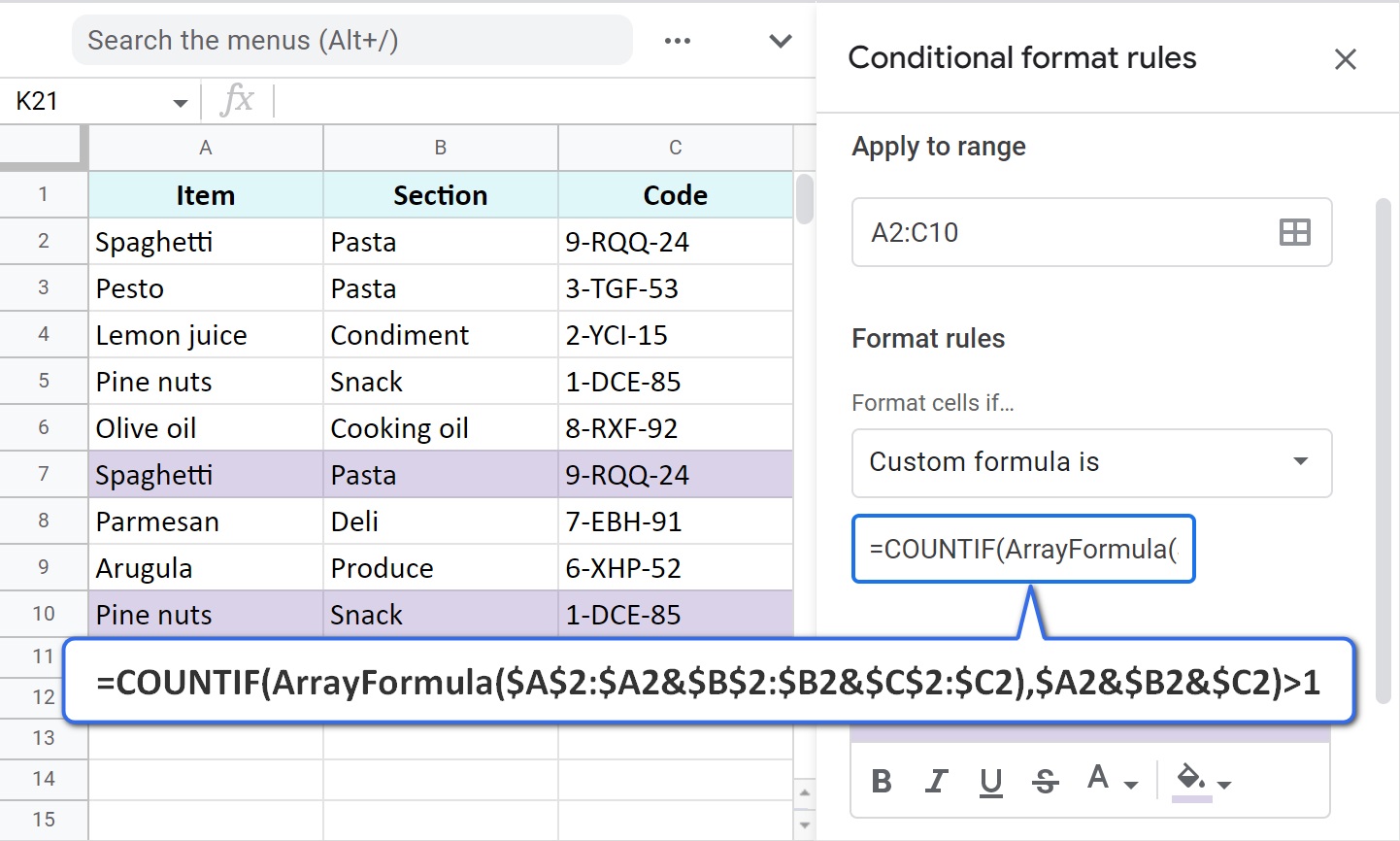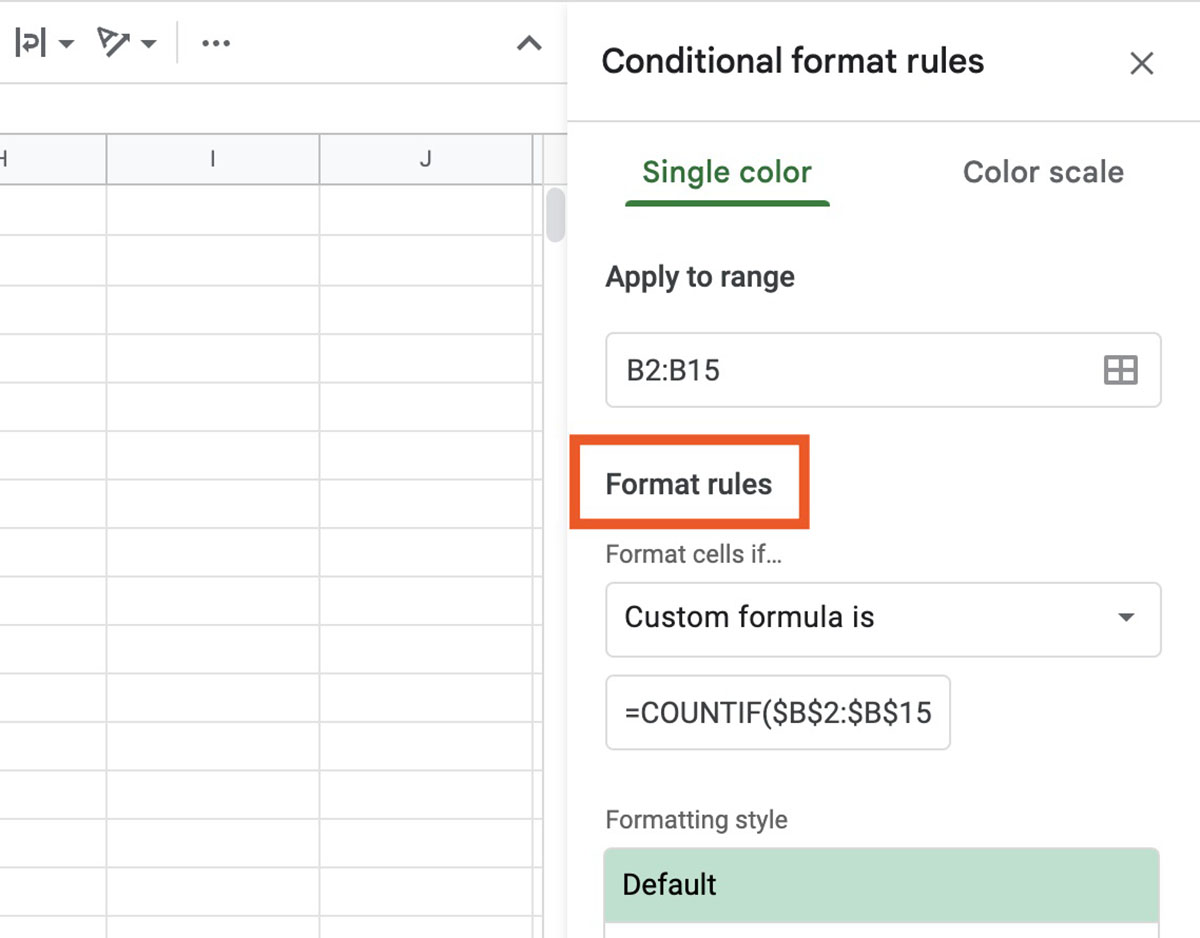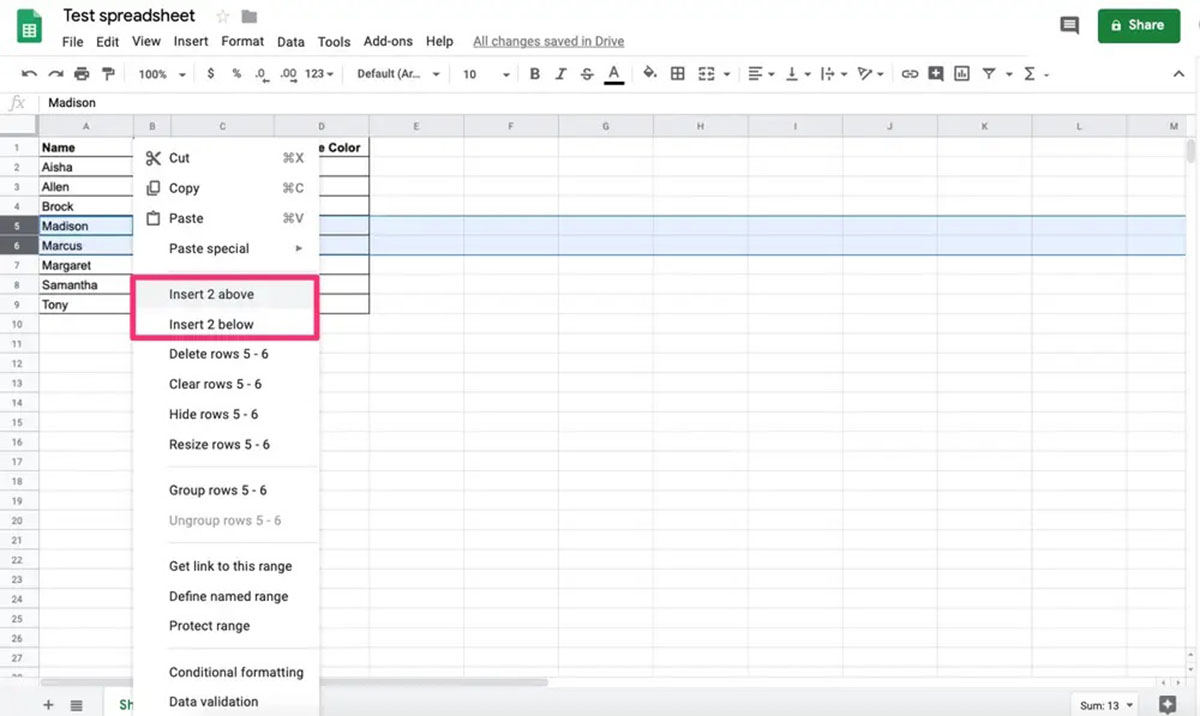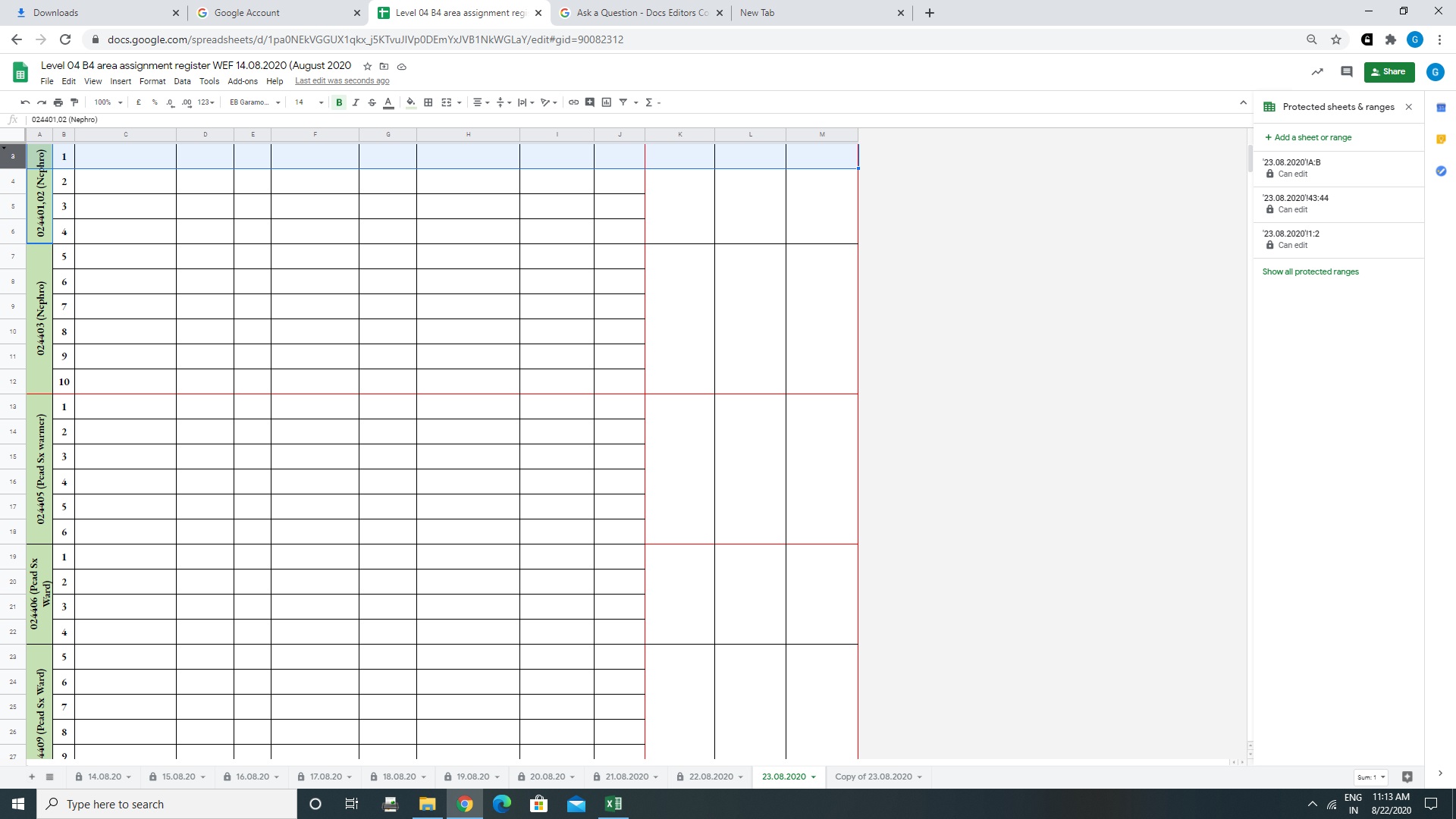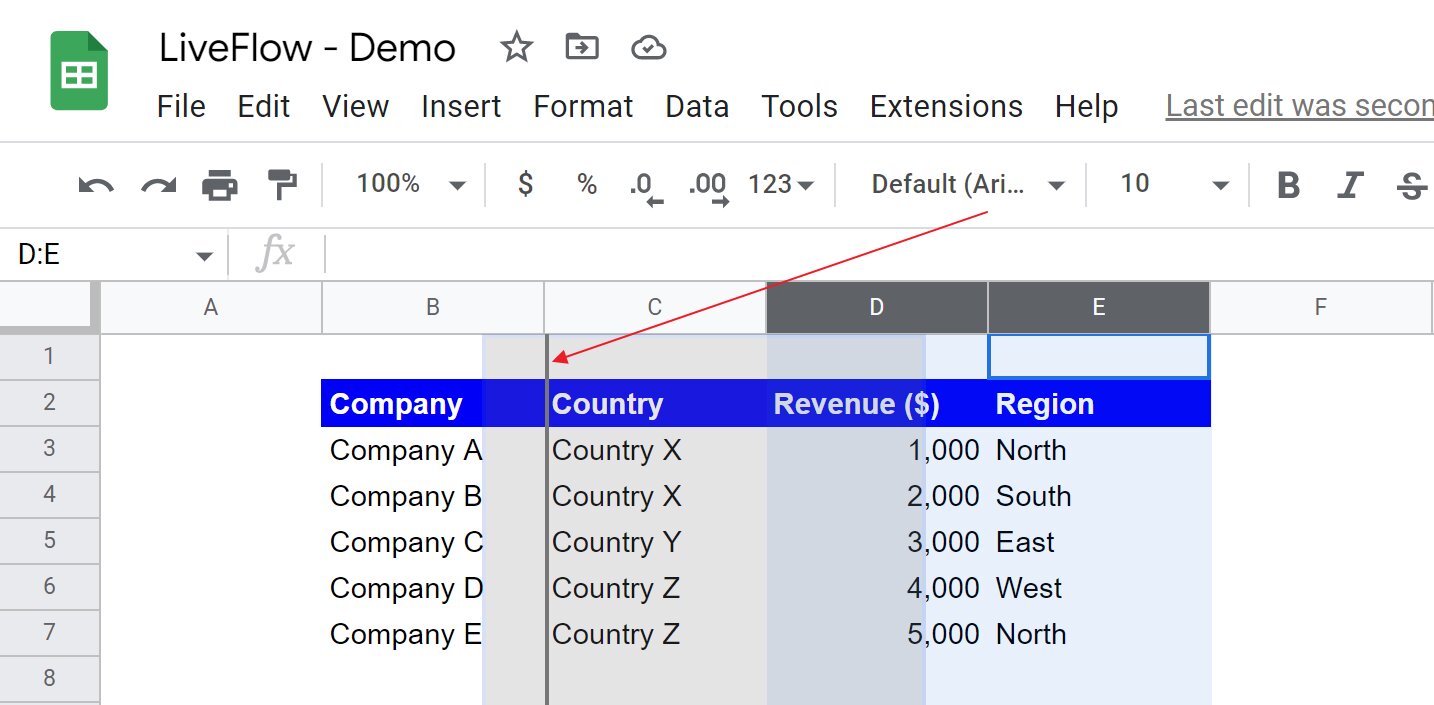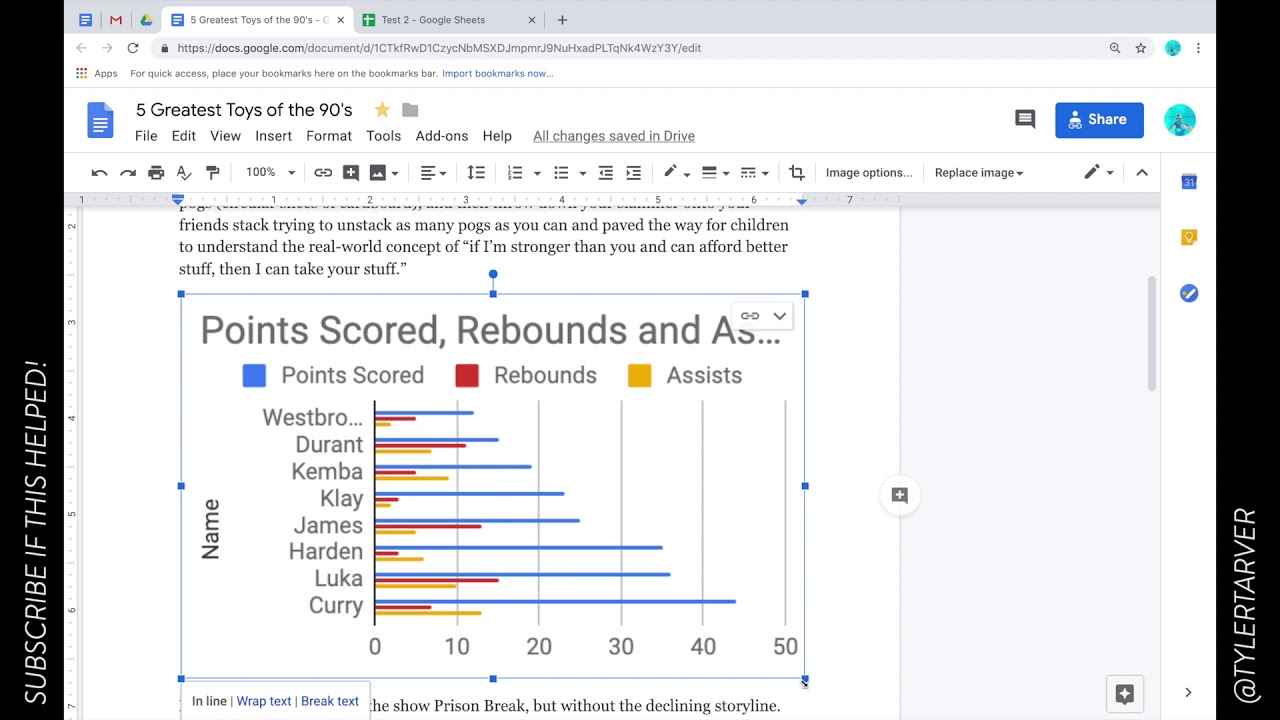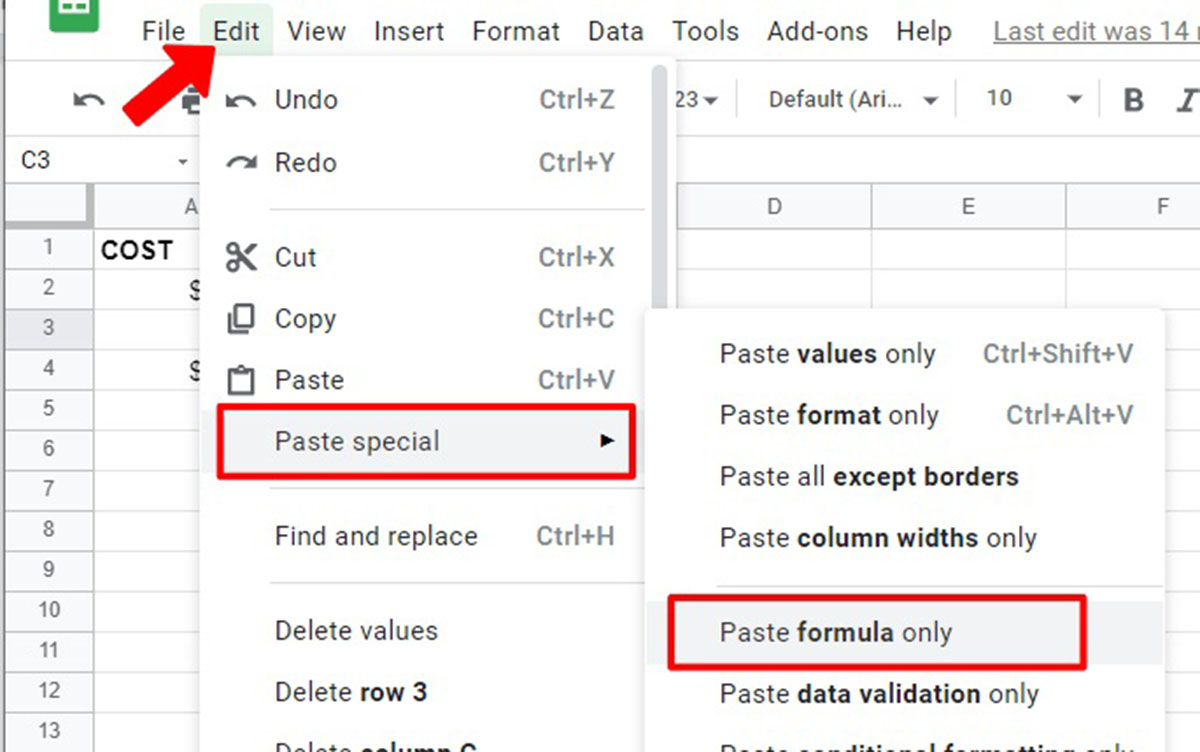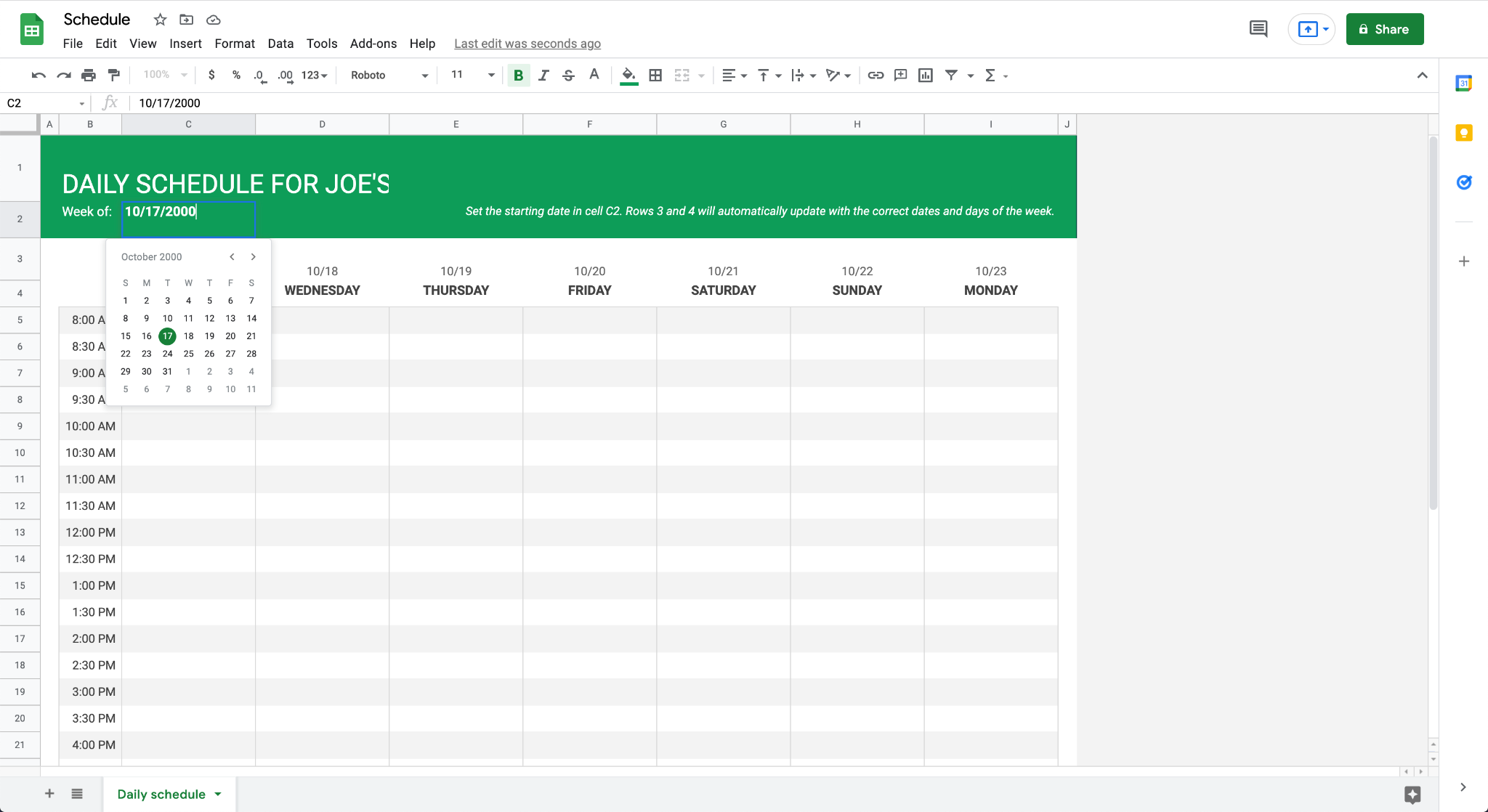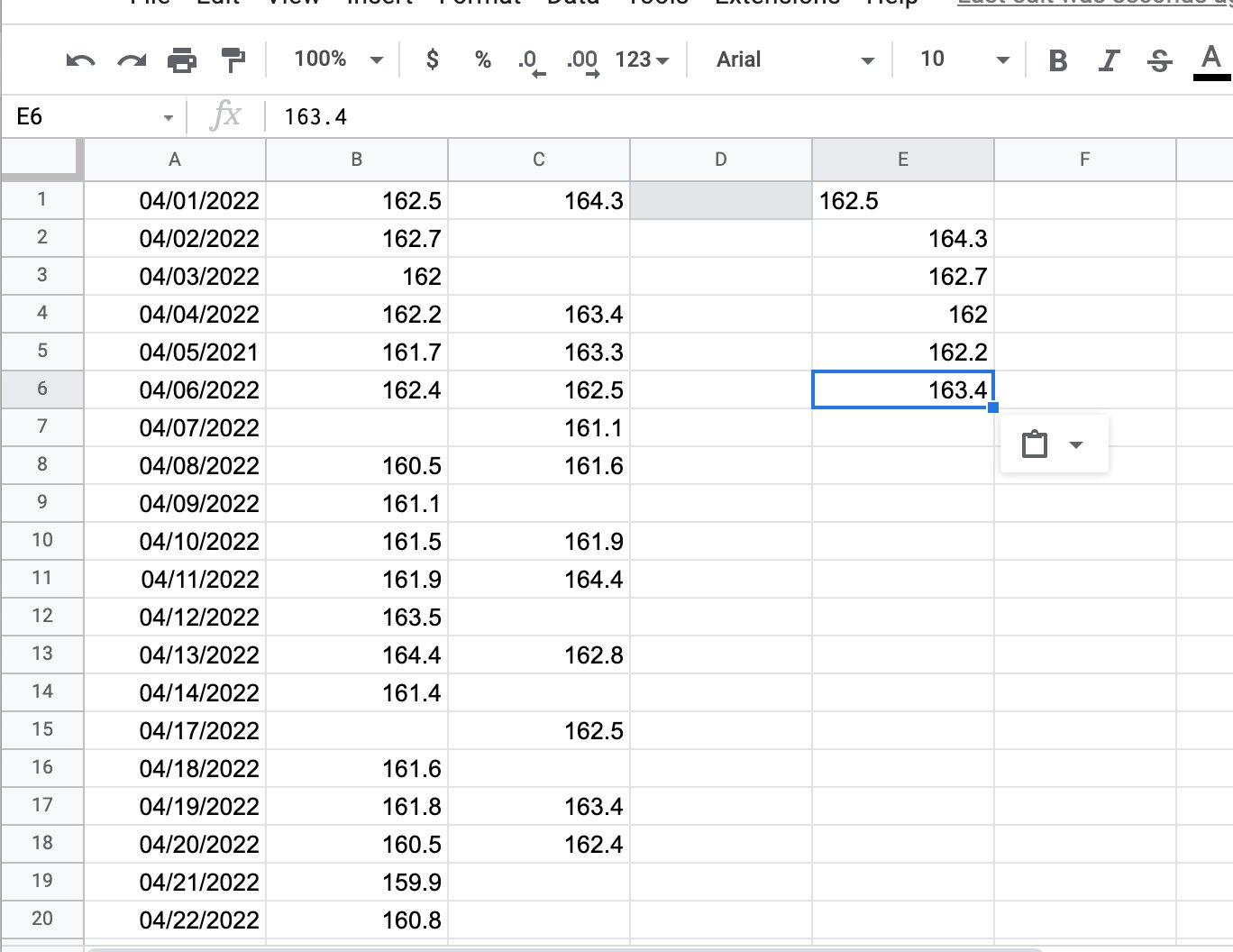Introduction
Welcome to this comprehensive guide on how to find duplicates in Google Sheets. Google Sheets is a powerful tool that enables users to create, edit, and collaborate on spreadsheets online. Whether you’re working on a simple budget or a complex project, it’s important to ensure the accuracy of your data. One common issue that arises is the presence of duplicates, which can cause errors and impact the integrity of your information.
In this article, we will explore several methods that you can use to identify and remove duplicates in Google Sheets. These methods range from simple built-in features to advanced add-ons, giving you the flexibility to choose the approach that best suits your needs. By following these techniques, you can save time, eliminate redundancy, and maintain data integrity in your spreadsheets.
Before we dive into the methods, it’s important to note that a duplicate refers to a cell value that appears more than once in a specific range of cells. The methods we’ll discuss can be applied to a single column, multiple columns, or even the entire spreadsheet. So, regardless of the size or complexity of your data, you’ll be able to easily identify and manage duplicates.
Having duplicates in your spreadsheet can be problematic as they may lead to inaccurate calculations, create confusion, and even make your spreadsheet harder to comprehend. By utilizing the techniques in this guide, you’ll be able to efficiently identify and deal with duplicates, ensuring the accuracy and clarity of your data.
Now, let’s explore the various methods that will help you in finding duplicates in Google Sheets, ranging from basic built-in features to more advanced add-ons. Let’s get started!
Method 1: Using Conditional Formatting
Conditional formatting is a powerful feature in Google Sheets that allows you to visually highlight cells that meet specified criteria. By using conditional formatting, you can easily identify duplicates in your spreadsheet. Here’s how:
- Select the range of cells where you want to check for duplicates.
- Click on the “Format” menu at the top of the screen and select “Conditional formatting.”
- In the conditional formatting dialog box, choose “Custom formula is” from the drop-down menu.
- Enter the following formula:
=COUNTIF($A$1:$A, A1)>1 - Select the formatting style for the duplicate cells, such as highlighting them in red.
- Click on the “Done” button to apply the conditional formatting to the selected range.
Once you have applied the conditional formatting, any duplicate values in the selected range will be highlighted according to the formatting style you chose. This makes it easy to visually identify the duplicate cells and take appropriate actions, such as deleting or modifying the duplicate values.
It’s important to note that the formula used in conditional formatting checks if the count of a cell’s value is greater than 1 in the given range. This means that any cells with duplicate values will meet the condition and be formatted accordingly.
This method is especially useful when working with smaller datasets or when you want to quickly scan and identify duplicates in your spreadsheet. However, for larger datasets, you may want to consider using alternative methods, as conditional formatting can become computationally intensive and may slow down the performance of your spreadsheet.
Now that you know how to use conditional formatting to find duplicates in Google Sheets, you can efficiently identify and manage duplicates in your data. Let’s move on to the next method!
Method 2: Using the COUNTIF function
Another effective method to find duplicates in Google Sheets is by using the COUNTIF function. The COUNTIF function allows you to count the number of times a specific value appears in a given range. By utilizing this function, you can easily identify duplicate values. Here’s how:
- Select an empty column next to the column or range where you suspect there may be duplicates.
- In the first cell of the new column, enter the formula:
=COUNTIF(A:A, A1)(replace “A” with the corresponding column letter). - Drag the formula down to fill the entire column.
Once you have entered the formula and dragged it down, each cell in the new column will display the count of how many times the corresponding value appears in the original column. Any value with a count greater than 1 indicates a duplicate.
To visualize the duplicates more easily, you can apply conditional formatting to the new column. Follow the same steps as in Method 1, but this time, choose the formatting style that highlights cells based on their value. You can choose a color or any other formatting option that makes the duplicates stand out.
This method is particularly useful when you want to have a separate column to indicate the frequency of each value. It allows you to have a clear overview of the number of times each value is repeated, making it easier to identify and manage duplicates in your spreadsheet.
Using the COUNTIF function gives you more flexibility and control over finding duplicates, as you can apply the formula to specific columns or ranges. It is especially helpful when dealing with larger datasets, where visually scanning for duplicates may be more time-consuming and challenging.
Now that you know how to use the COUNTIF function to find duplicates in Google Sheets, you can efficiently manage and clean your data. Let’s explore the next method!
Method 3: Using the UNIQUE function
The UNIQUE function in Google Sheets allows you to extract the unique values from a given range or column. By utilizing this function, you can easily isolate and identify the unique values, which in turn helps you identify any duplicates in your data. Here’s how to use the UNIQUE function:
- Select an empty column or range where you want the unique values to appear.
- In the first cell of the new column, enter the formula:
=UNIQUE(A:A)(replace “A” with the corresponding column letter). - Press Enter and the unique values from the original column will be extracted in the new column.
Once you have entered the formula, the UNIQUE function will populate the new column with only the unique values from the original column. Any values that appear more than once are automatically filtered out.
To easily identify the duplicates, you can utilize conditional formatting as discussed in Method 1. Apply the conditional formatting to the new column and choose the formatting style that visually distinguishes the duplicate values. This will allow you to quickly spot and manage the duplicates in your spreadsheet.
Using the UNIQUE function not only helps you identify duplicates but also provides you with a clear overview of the unique values in your data. This method is particularly useful when you want to focus on the unique aspects of your data and easily pinpoint any duplicates present.
Keep in mind that the UNIQUE function only extracts the unique values and does not directly remove duplicates. If you want to remove the duplicate values and keep only the unique ones, you will need to copy the unique values to a new column or perform additional steps. However, this method provides a useful starting point for identifying and managing duplicates in your spreadsheet.
Now that you know how to use the UNIQUE function to find duplicates in Google Sheets, you can efficiently analyze and clean your data. Let’s move on to the next method!
Method 4: Using the Remove duplicates feature
Google Sheets provides a built-in feature that allows you to quickly remove duplicate values from a selected range. This feature is particularly helpful when you want to directly eliminate duplicates without the need for additional formulas or formatting. Here’s how to use the Remove duplicates feature:
- Select the range of cells from which you want to remove duplicates. This can be a single column, multiple columns, or even the entire spreadsheet.
- Click on the “Data” menu at the top of the screen and select “Remove duplicates.”
- A dialog box will appear with the selected range. You can choose specific columns or select all columns if desired.
- Toggle the “Data has header row” option if your range includes headers, to ensure they are not considered duplicates.
- Click on the “Remove duplicates” button.
- A confirmation dialog will appear, notifying you of the number of duplicate values found and the number of unique values that will remain.
- Click on the “Remove duplicates” button in the confirmation dialog to proceed.
Once you have clicked on the “Remove duplicates” button, Google Sheets will automatically analyze the selected range and remove any duplicate values, leaving only the unique values behind.
It’s important to note that the Remove duplicates feature permanently deletes the duplicate values and cannot be undone. Therefore, it’s recommended to create a backup of your spreadsheet or work on a copy if you are unsure about removing duplicates.
This method provides a straightforward and efficient way to remove duplicates in Google Sheets. It is especially useful when you want to quickly clean up your data and eliminate any redundancies or inconsistencies.
Now that you know how to use the Remove duplicates feature, you can easily remove duplicates and maintain a clean and accurate dataset. Let’s move on to the next method!
Method 5: Using Add-ons
In addition to the built-in features and functions, Google Sheets also offers a wide range of add-ons that can help you find and manage duplicates more efficiently. Add-ons are third-party extensions that can be installed and integrated into Google Sheets to enhance its functionality. Here’s how to use add-ons to find duplicates:
- Click on the “Add-ons” menu at the top of the screen and select “Get add-ons.”
- Browse through the add-ons marketplace or use the search bar to find add-ons specifically designed for finding duplicates.
- Select the desired add-on and click on the “Install” button.
- Follow the on-screen instructions to complete the installation process.
- Once the add-on is installed, it will appear under the “Add-ons” menu.
- Open the add-on and configure its settings according to your preferences.
- Run the add-on to scan your spreadsheet and identify any duplicates.
Add-ons provide advanced features and customization options that may not be available in the built-in functionality of Google Sheets. They offer a variety of methods to find and manage duplicates, such as fuzzy matching, advanced filtering, and more.
By utilizing add-ons, you can streamline and automate the process of finding duplicates, saving time and effort. However, it’s important to note that add-ons are developed by third-party providers, so always ensure to read reviews, check ratings, and verify the credibility of the add-ons before installing them into your Google Sheets.
Now that you are familiar with using add-ons to find duplicates, you can explore the add-ons marketplace to find the one that best suits your needs and optimize your duplicate management process.
Conclusion
Managing duplicates in Google Sheets is essential for maintaining accurate and organized data. With the various methods outlined in this guide, you can effectively identify and handle duplicates, regardless of the size or complexity of your spreadsheet.
Using conditional formatting allows you to visually spot duplicate values by applying formatting styles to the cells that meet specific criteria. The COUNTIF function helps you count the occurrences of values, enabling you to identify duplicates based on their frequency. The UNIQUE function extracts unique values, making it easier to spot the duplicates. The Remove duplicates feature quickly removes duplicate values from a selected range. Finally, utilizing add-ons provides advanced features and customization options for more efficient duplicate management.
Remember, depending on your specific needs and the complexity of your data, different methods may be more suitable. It’s important to choose the method that aligns with your requirements and preferences.
By regularly checking for and removing duplicates in your spreadsheets, you can enhance the accuracy, clarity, and reliability of your data. This will lead to more effective decision making and improved productivity in your work.
Take advantage of the methods discussed in this guide and customize them to fit your unique requirements. Whether you rely on built-in features, formulas, or add-ons, managing duplicates in Google Sheets will streamline your data analysis and ensure a seamless workflow.
Now that you have the knowledge and tools to find duplicates in Google Sheets, go ahead and apply these techniques to your own spreadsheets. Enjoy the benefits of clean and accurate data!







